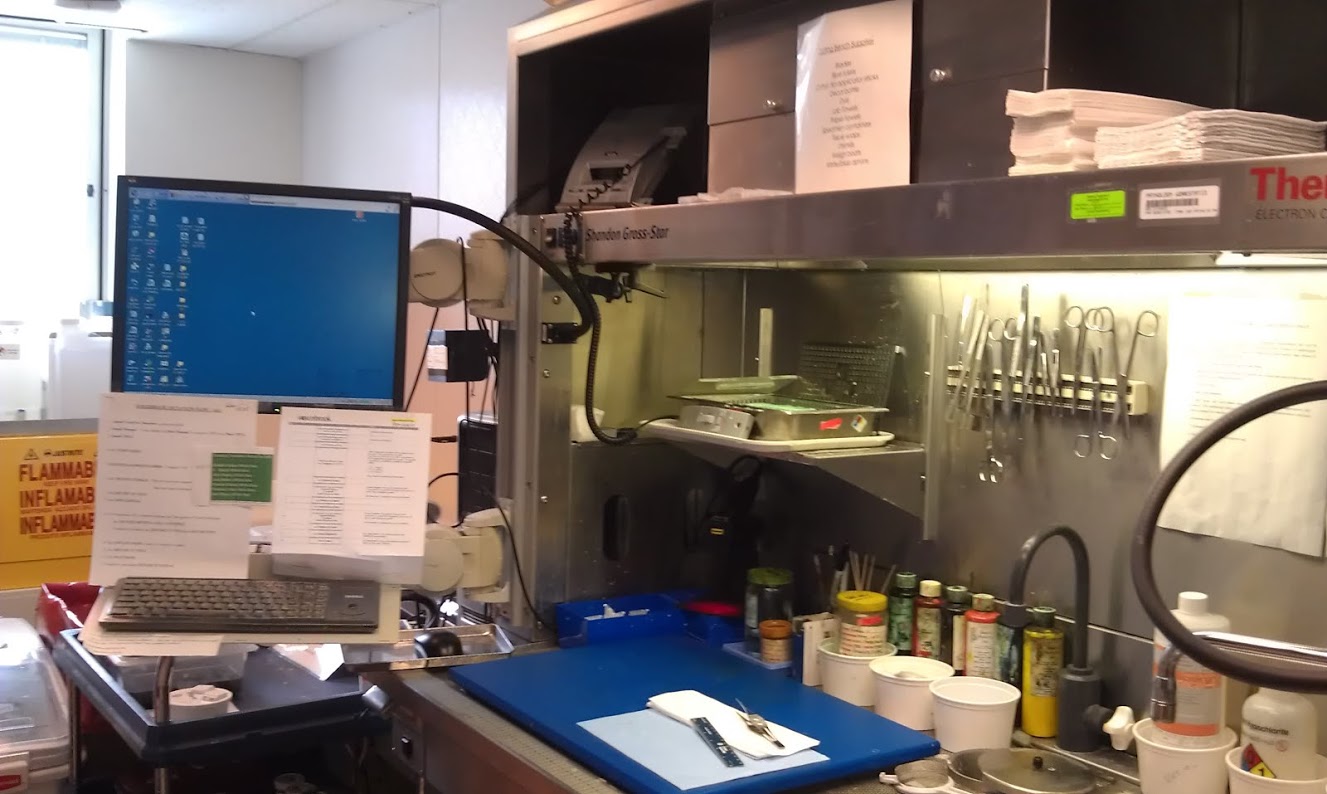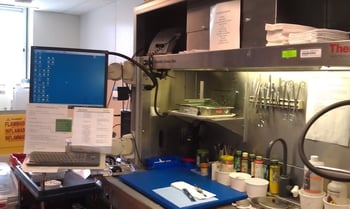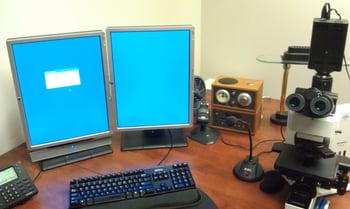3 min read
How to Prepare Your Lab Environment for a Speech Recognition Solution
Voicebrook Friday September 04, 2015

One of the earliest priorities for a Project Manager in a VoiceOver implementation is to ensure that the physical dictation environment is properly setup for successful speech recognition use. In many cases the PA or Pathologist may not have previously relied on a computer workstation as a regular part of their case reporting. In other cases, if a computer workstation was available, it may not have been setup effectively to be utilized while working with case materials. The reason it is so important to focus on the physical environment early in an implementation is that some of the requirements may involve equipment or physical setup that involves people or resources that take time to schedule or procure.
Below is a list of the most common physical aspects of a laboratory environment that need preparation prior to a pathology speech recognition reporting solution implementation.
1. The Gross room
The majority of the case dictation is completed in the gross room and it is the most demanding physical environment in the lab. It is important to ensure that users can not only move freely as needed for prepping specimens, but also that workstations will move freely with them in order to view what is being dictated on the screen. Having this flexibility minimizes the distraction of dictation and editing while allowing the Pathology professional to focus on delivering the most clinically accurate gross report.
In this environment it is also important to be hands-free while dictating, so that a specimen can be handled and examined. There is also a significant amount of background noise in most gross rooms. Common background noise sources include other PA's or Pathologists dictating their cases, exhaust fans, people walking in the room and having a conversation, and microtomes. As a result, a wireless headset is our recommended dictation device as it includes noise canceling technology, sits close to the mouth (to maximize the volume of dictation compared to other sources of noise), and provides the necessary flexibility to be hands-free and mobile.
Other physical, environmental, and infrastructure issues to consider in a gross room include providing access to power, a network cable, and even a place to mount a monitor arm. The gross workstation monitor should be maintained at an angle of no more than 45 degrees. Workstation monitors may be mounted on an articulating arm or placed in such an area that is easily viewable from the grossing bench. This helps the user view and correct and/or edit the report being dictated on the screen at the same time as they are physically grossing the specimen. Providing this setup will greatly decrease any errors in case dictation, but also increase efficiency in the gross room.
2. The Pathologist office
The Pathologist Office sign-out stations
also rely on the use of a computer workstation, but the new challenge is accommodating for the microscope. When it comes to microphone options for a Pathologist, there are several more choices that can be selected based upon user preference. These include a standard desktop goose neck microphone, a hand-held microphone, or wired and wireless headsets.
Dictation options and styles also vary from user to user and this impacts the office setup. Some users prefer to view each slide and dictate its content in real-time, while others prefer to view the slides, gather their thoughts, and then dictate their diagnosis. For the best possible ergonomics, it is recommended that the workstation monitor be placed at no more than a 45 degree angle from the microscope, as well as be fitted with a keyboard, mouse, and room on the floor for a foot pedal.
In addition to the microphone options and workstation placements, it is also important to provide adequate electrical outlets and network drops for all workstations, with additional focus when adding new workstations for your implementation. These two critical items take time procure, so it is always a good idea to plan for this in the very beginning of a project. Your in-house IT staff may need to be consulted or further involved to assist as needed. We recommend a fully duplexed connection speed of 100Mbps to the network for optimum performance without any delays or latency issues.
Final word:
During a VoiceOver project implementation, a Project Manager will work with the Pathology project team to ensure that the physical environment is setup properly in preparation for go-live. They will address any potential issues during the earliest stages of the project. Rest assured that team members will be given guidance through the implementation that includes physical environment setups and hardware options for a successful speech recognition experience.
For more information...




